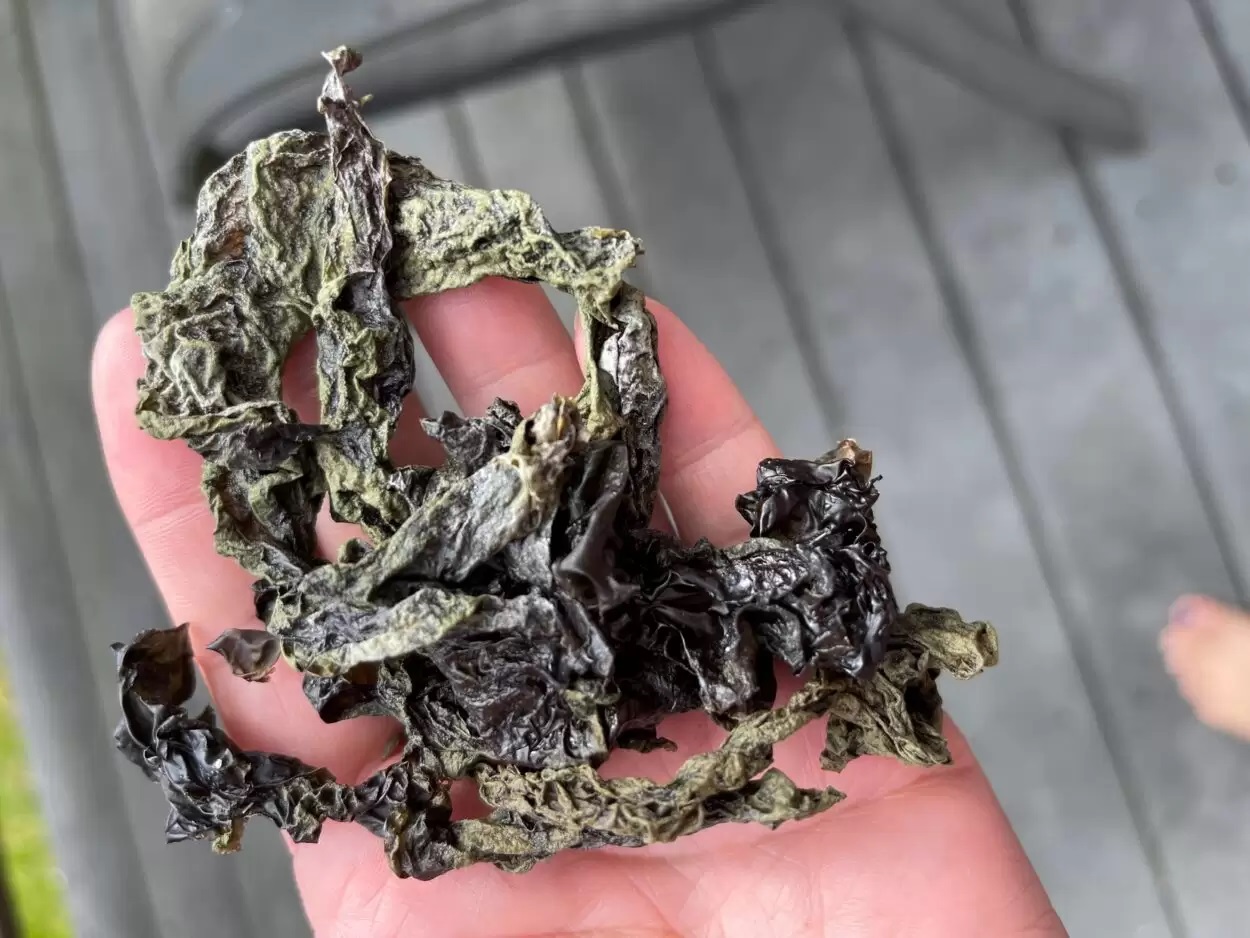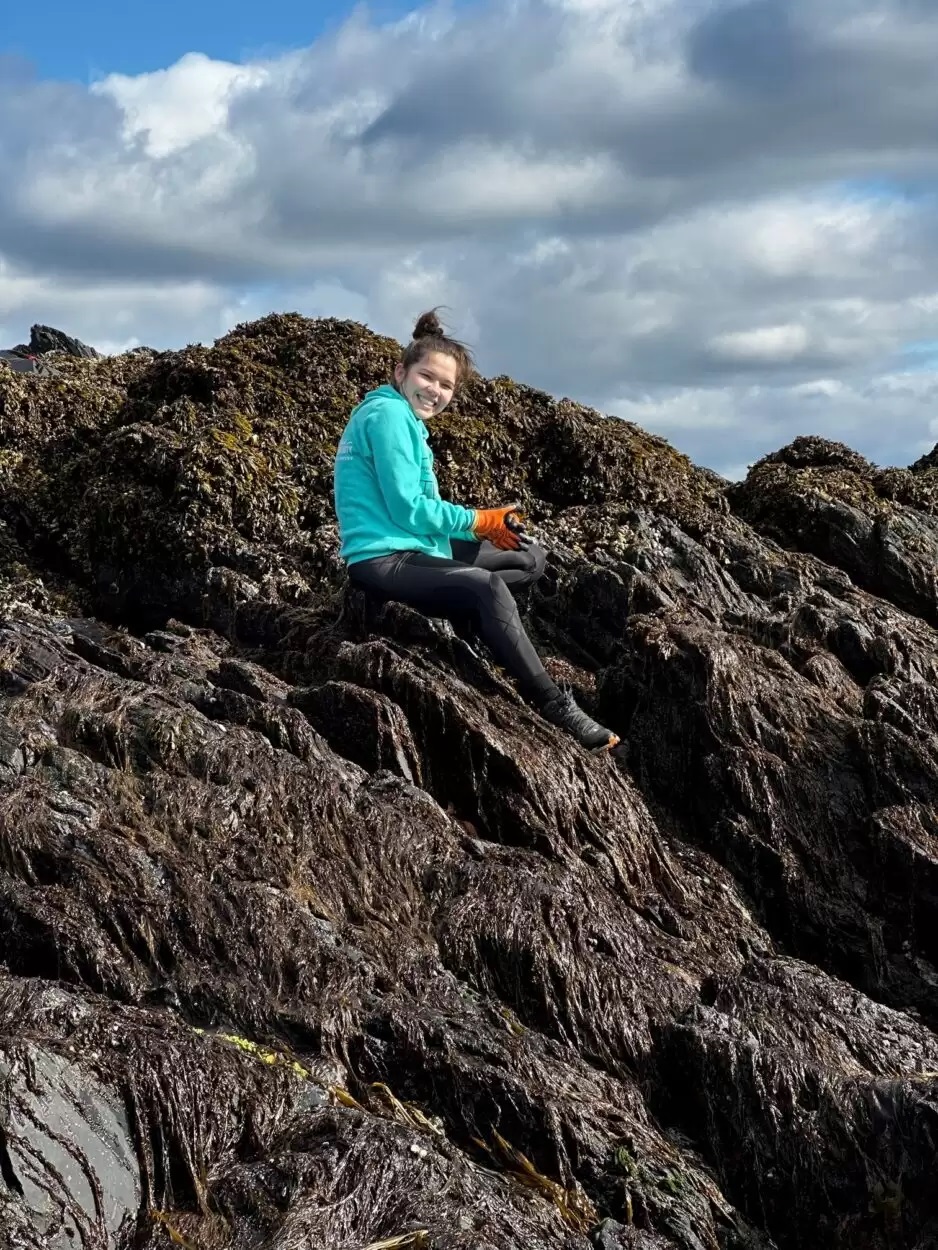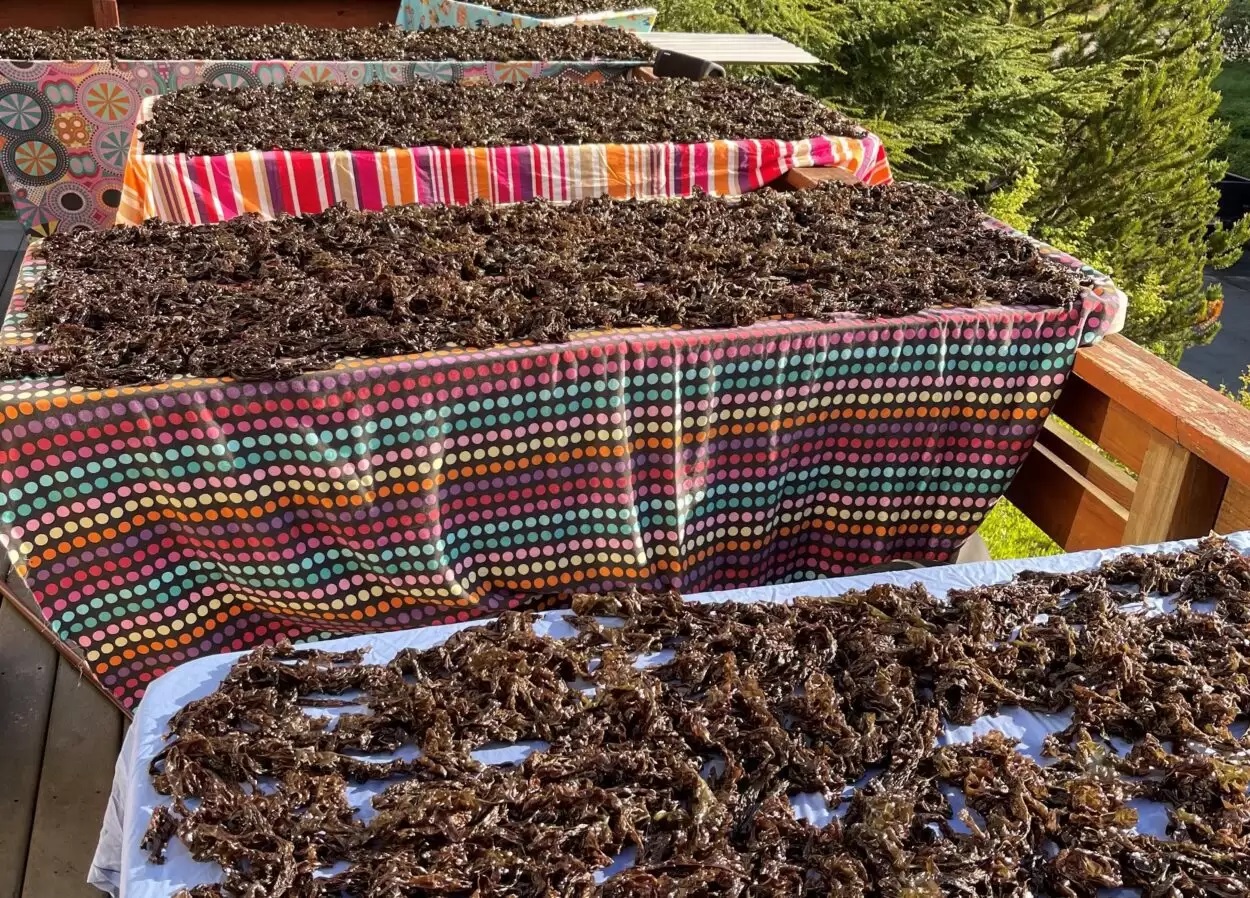
Black seaweed is a culturally significant delicacy in Southeast Alaska. But in recent years, traditional harvesters say it doesn’t look or taste right and it’s difficult to find.
Irene Dundas has harvested black seaweed her whole life — near Kake when she was young and near Ketchikan as an adult. The harvest happens in May when the seaweed is exactly the right size. Dundas and family members travel by boat to specific large rocks far from shore. It must be low tide so they can pull the seaweed off the rocks.
“When you’re grabbing it in your handful, it looks like you’re grabbing a handful of long, thick black hair,” Dundas said.
Black seaweed is found in more treacherous areas. It needs nutrients that only come from lots of moving water.
Dundas harvests about 50 gallons to share with family and friends. Processing is lengthy, drying the seaweed into bite-sized pieces.
“It’s kind of crunchy like a piece of popcorn,” she said. “But the flavor is like the black seaweed that you put on sushi. It’s that exact flavor. So delicious.”
She transfers the wet seaweed in pillowcases and puts it outside on several large tables to dry. But in the years 2021 and 2022, she noticed something was wrong.
“The seaweed that I picked had a very distinct strong, strong smell,” Dundas said. “There was a discoloration, this light green color. I felt like it had a little bit more metallic taste to it.”
To get any good seaweed this year, she traveled for hours by boat near the Canadian border. Her past harvests, she threw away.
“I was alarmed and very, very, very upset,” said Dundas. “I had no clue what was going on.”

Keolani Booth has similar concerns. He collects black seaweed on the outer waters near Metlakatla and southern Prince of Wales Island.
“This year, I hardly had anything of a harvest,” he said. “I usually give out quite a bit to our community members that can’t go out. And I was only able to get a minute amount and it was kind of heartbreaking because, you know, some of these people depend on me to bring them some seaweed for the year.”
Booth said black seaweed could be like a canary in a coal mine — a warning of what could come from climate change.
“It’s a very hard seaweed to try to cultivate,” Booth said. “It’s very sensitive, which, you know, you realize that in the open ocean, it’s a precursor to all the things that are stronger in the ocean.”
The Metlakatla tribe got a grant to start researching the problem two years ago. That research is ongoing. And last month, Dundas and Booth carried their concerns to a meeting in Juneau, hosted by the Sealaska Heritage Institute. Harvesters and scientists discussed what to do.
Jennifer Clark from Vancouver brought a Western science perspective. She works for a kelp company but studied the effects of climate change on seaweed for her Ph.D. In a post-doctoral project, she worked with Indigenous groups in central British Columbia about black seaweed disappearing there.
“In 2016, it’s almost completely missing from the intertidal shoreline,” she said.
Clark’s research linked the disappearance to an enormous hot water mass in the Northern Pacific known as The Blob. In 2014-2015, The Blob moved from the Gulf of Alaska down to California. It was followed by more heat from El Niño, which elevated seawater one to two degrees, enough to destroy the black seaweed.
“These heat waves are kind of unprecedented,” said Clark. “They just cause disruptions in life cycles and disturbances in the intertidal, which most of the seaweeds that you find are intertidal-subtidal, so they’re getting extreme changes in their habitat.”
She learned that black seaweed couldn’t survive past 64 degrees. As temperatures cooled in the years after The Blob and El Niño double whammy, British Columbia’s seaweed started to come back. But not like before. Clark doesn’t know if Alaska’s black seaweed problem was also affected by The Blob — she says it would take more research. But she does know that black seaweed anywhere has challenges ahead if climate predictions come true.
“I think if it was persistent, like if we were to increase two degrees — 2050, I think that’s the projection is one and a half degrees — then maybe they won’t be so resilient, and they’ll just kind of exist as much as they can until they’re wiped out,” Clark said.

Rosita Worl is the president of Sealaska Heritage Institute. She said the seaweed is critical to many communities in and out of Alaska because it’s shared and traded.
“Black seaweed is really important to us as a food source, but also for its cultural components,” Worl said. “It’s like a glue that binds our community together through our widely sharing patterns. It also has spiritual dimensions. Black seaweed is distributed and consumed during our ceremonies.”
Sealaska Heritage Institute is creating a committee comprised of harvesters and scientists to start researching the problem. They’re also documenting the historical practices of the harvest and how it’s changed in recent years.
They hope the information will help them figure out if there’s any way to save black seaweed.




